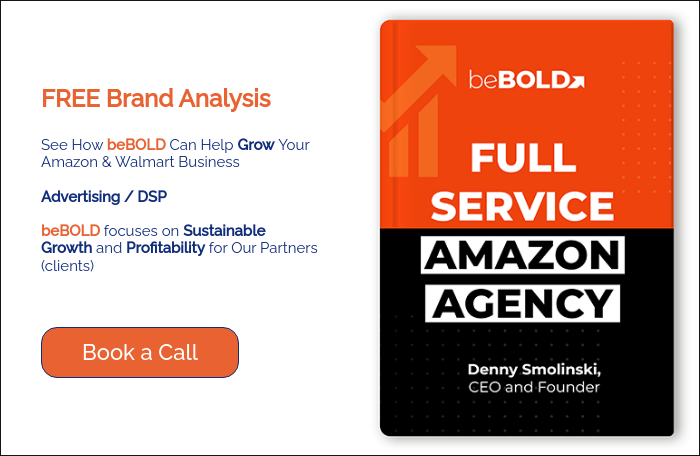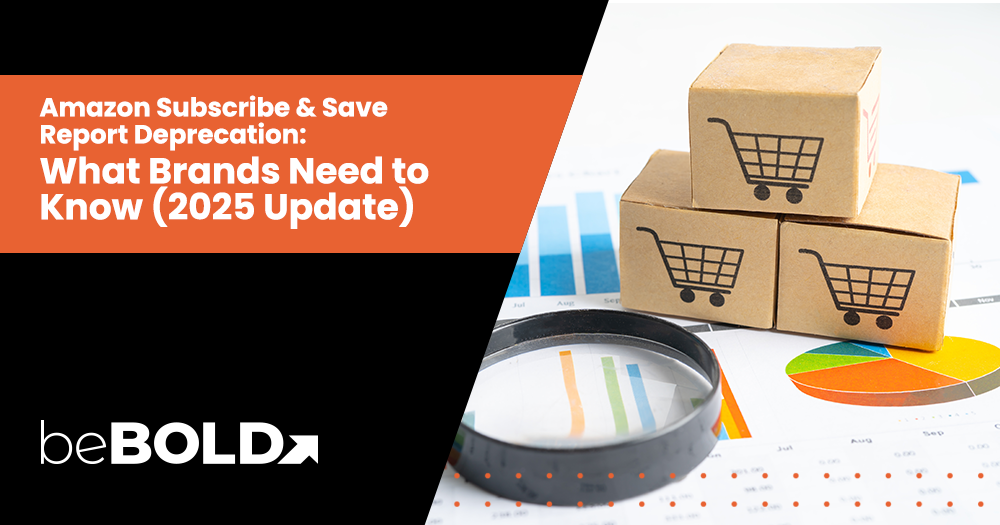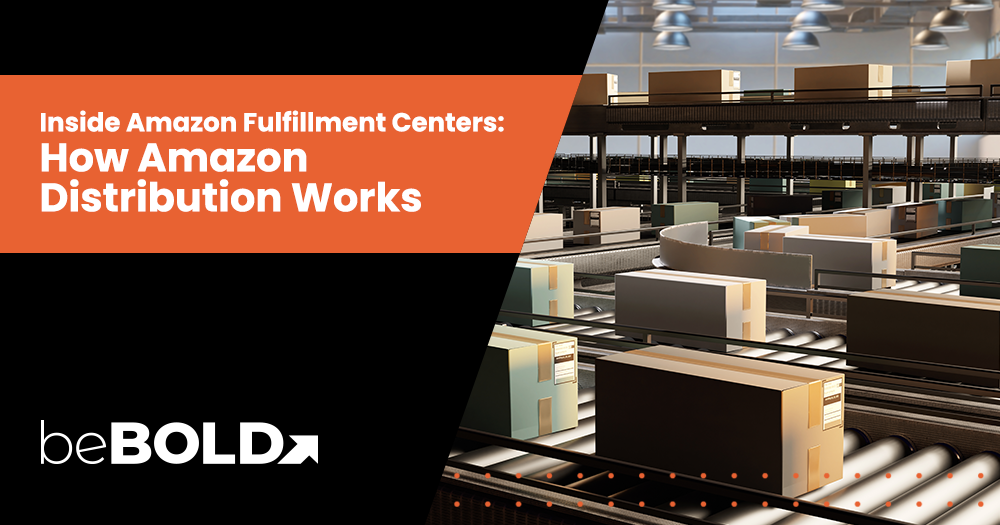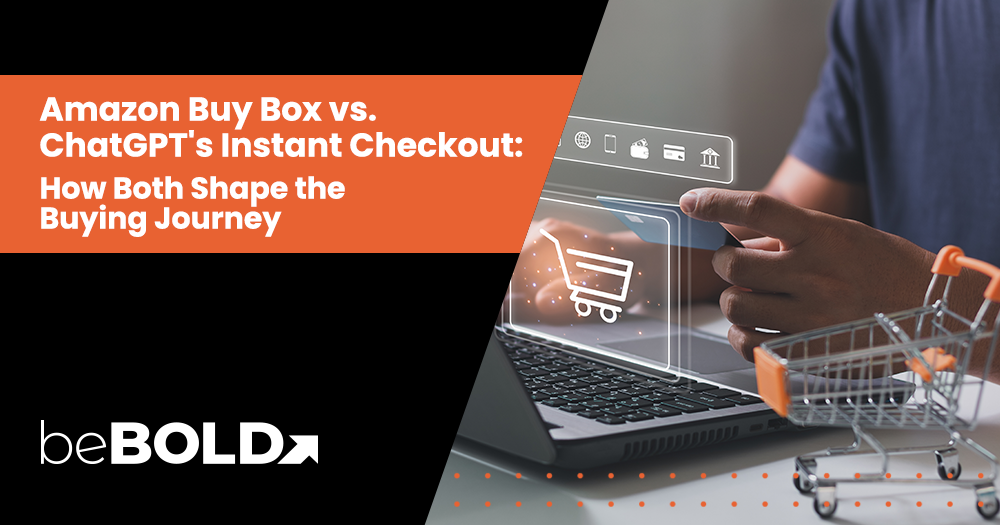Key Highlights
- Amazon 1P operates via Vendor Central, where Amazon buys products wholesale, controls pricing, fulfillment, and listings, ideal for large brands with retail infrastructure.
- Amazon 3P operates via Seller Central, giving sellers full control over pricing, listings, branding, and customer relationships while offering flexible fulfillment options like FBA and FBM.
- 1P vendors benefit from Amazon’s trust factor, bulk purchase orders, simplified logistics, and potential retail-level exposure through Amazon marketing support.
- 3P sellers gain better margins and brand flexibility, with the ability to optimize listings, launch products faster, and access detailed performance data.
- 1P sellers sacrifice pricing and brand control, face unpredictable PO cycles, and deal with deductions and chargebacks that can erode profitability.
- 3P sellers must manage fulfillment and customer service, handle rising marketplace fees, and compete with other sellers—including Amazon, on the same listings.
- Hybrid models blend 1P and 3P, allowing sellers to scale high-volume products via 1P while testing and optimizing niche SKUs through 3P.
- Entry into 1P is by invitation only, typically for brands with strong demand, high sales volume, and a proven supply chain.
- 3P selling is open to anyone, with low entry barriers via Seller Central, giving entrepreneurs and small brands direct access to Amazon’s customer base.
- beBOLD Digital helps brands navigate 1P, 3P, or hybrid setups, offering full-channel Amazon support, creative strategy, and data-backed execution.
Deciding between Amazon 1P vs 3P can shape everything from your inventory management to your advertising campaigns and long-term competitive edge. With the average annual sales for U.S. independent sellers reaching $290,000 (Amazon, 2024), the choice between becoming an Amazon vendor (1P) or a third-party seller (3P) is more critical than ever. Each model offers unique pros, cons, and costs, from purchase orders and Amazon’s PO replenishment to marketplace fees and order fulfillment. In this blog, we break down what is Amazon 1P vs 3P, compare the level of control, and help you choose the model that best fits your business goals. Let's dig in!
What is Amazon 1P?

Amazon 1P (First-Party) means you act as a wholesale supplier, selling your inventory directly to Amazon. In this model, you operate as an Amazon vendor through Vendor Central, not Seller Central.
Here’s how it works:
- Amazon sends you a purchase order (PO) for your products.
- You fulfill that order and ship the products to Amazon’s warehouses.
- Amazon takes care of pricing, order fulfillment, customer service, and logistics.
- Your products appear as “Ships from and sold by Amazon”.
Amazon 1P gives you access to major retail distribution but offers less control over pricing and product detail pages.
Pros of a 1P Model

If you're considering selling as an Amazon vendor, the 1P model offers several strategic advantages, especially for established brands or manufacturers with wholesale products. Here’s how selling via Vendor Central can benefit your business:
- Trusted Retail Presence: Products are listed as “Ships from and sold by Amazon,” which can increase consumer trust and boost conversions on your product detail pages.
- Simplified Logistics: Amazon takes full care of logistics, including order fulfillment, inventory storage, and customer service, freeing you to focus on product development.
- Retail-Level Exposure: As a 1P seller, your products may be prioritized in Amazon’s advertising campaigns, featured placements, and even considered for retail promotions.
- Bulk Purchase Orders: Amazon sends regular purchase orders (POs), making it easier to plan production and maintain stable inventory levels.
- No Direct Customer Interaction: Amazon handles all customer inquiries and returns, reducing your need for direct order management or support.
Cons of a 1P Model

While the 1P model offers retail-like advantages, it also comes with several limitations that can impact your profit margins, level of control, and operational agility. Here are some challenges you should consider before going the Amazon vendor route:
- Limited Pricing Control: Amazon sets the retail price, which may lead to unexpected discounts or price erosion, especially during promotions or price matching.
- Complex Purchase Order Management: You're dependent on Amazon’s PO replenishment schedule. If Amazon delays or skips reordering, your inventory levels and sales can take a hit.
- Strict Operational Requirements: Failing to meet Amazon’s logistics, shipping, or compliance requirements can result in penalties, chargebacks, or reduced PO frequency.
- Additional Fees and Deductions: Amazon may apply variable closing fees, marketing co-op fees, and other deductions that eat into your margins and are often non-negotiable.
- Less Brand Control: You have minimal say over product detail page content, including images and descriptions, which can affect brand consistency and SEO optimization.
What is Amazon 3P?

Amazon 3P (Third-Party) means you sell products directly to customers on Amazon’s marketplace using an Amazon seller account through Seller Central. You act as the retailer and maintain more control over your business operations.
Here's how 3P selling works:
- You manage your own product listings, pricing, and advertising campaigns.
- Choose between Fulfillment by Amazon (FBA) or Fulfillment by Merchant (FBM) for order management and shipping.
- You're responsible for inventory levels, customer service, and launching new products.
This model gives sellers greater flexibility, brand control, and direct access to Amazon’s massive customer base.
Pros of a 3P Model

In Q1 of 2024, third-party sellers accounted for 61% of all marketplace sales (Marketplace Pulse, 2024), proving the strength and scalability of the 3P model. If you're looking for more autonomy and brand flexibility, 3P selling through Amazon Seller Central offers several compelling advantages:
- Greater Control Over Pricing: As a 3P seller, you set your own prices, allowing for dynamic pricing strategies, better profit margins, and improved competitive edge.
- Full Ownership of Listings: You control your product detail pages, including titles, images, and descriptions, helping with Amazon SEO optimization and brand consistency.
- Flexible Fulfillment Options: Choose between Fulfillment by Amazon (FBA) or Fulfillment by Merchant (FBM) based on your business needs and order management capacity.
- Faster Product Launches: Easily introduce new product launches without waiting for Amazon’s approval or purchase orders, giving you more agility in trend-driven markets.
- Direct Customer Relationships: You manage customer service and can build loyalty by providing excellent support, increasing the chance of repeat purchases.
- Visibility Into Marketplace Data: Access to detailed sales reports, advertising campaign data, and inventory management tools lets you make informed, data-driven decisions.
Cons of a 3P Model

While the 3P model offers flexibility and greater control, it also comes with operational demands and added costs. If you're managing your own Amazon seller account, be prepared to handle the following challenges:
- Responsibility for Order Fulfillment: Unless using Fulfillment by Amazon (FBA), you're in charge of order management, shipping, and returns, adding time and logistical complexity.
- Customer Service Burden: You must provide prompt and effective customer service, which can impact your seller rating and overall Amazon store performance.
- Higher Marketplace Fees: 3P sellers incur referral fees, variable closing fees, and other additional fees that vary by product category and fulfillment method.
- Inventory Management Pressure: Keeping accurate inventory levels is crucial to avoid stockouts, listing suspensions, or poor customer experiences.
- Increased Competition: You compete directly with other 3P sellers and even Amazon itself on certain listings, which can drive down pricing and profit margins.
- Ongoing Optimization Required: Success demands constant attention to listing quality, advertising campaigns, and SEO optimization to stay visible in the Amazon marketplace.
How About a Hybrid of 1P and 3P?

Not sure whether to choose 1P vs 3P on Amazon? Many brands are now blending both strategies to capitalize on the strengths of each model. This hybrid approach gives businesses the flexibility to adapt across product categories, inventory demands, and changing marketplace conditions. Here’s what to expect from combining Amazon Vendor Central and Seller Central:
Pros of Hybrid Model
A hybrid strategy lets brands take advantage of both Amazon 1P and 3P models. It’s especially useful for sellers navigating different product types, sales volumes, or seasonal demands.
- Broader Market Coverage: Leverage Amazon Vendor Central for high-volume items and Seller Central for niche or new product launches, increasing your total Amazon marketplace footprint.
- Increased Operational Flexibility: Switch between models based on purchase order volume, inventory management needs, or profit margin opportunities.
- Better Data and Insights: Access performance analytics from both platforms to better understand customer behavior and refine your Amazon advertising campaigns.
- Diversified Revenue Streams: Balance wholesale-like bulk sales through 1P with higher-margin, brand-controlled 3P transactions.
- Strategic Control Over Listings: Use 3P to retain greater control of your product detail pages, while using 1P for listings Amazon pushes aggressively.
Cons of Hybrid Model
That said, running both 1P vs 3P Amazon models together isn’t without its drawbacks. It increases complexity and requires careful coordination to avoid inefficiencies or internal conflicts.
- Operational Complexity: Managing two selling platforms means double the effort in order management, reporting, and coordination across internal teams.
- Potential Channel Conflict: Price inconsistencies between 1P and 3P listings may confuse customers or trigger unwanted pricing pressure from Amazon.
- Logistical Burden: Running both fulfillment models (FBA and Amazon’s PO system) requires tight inventory level tracking and seamless supply chain optimization.
- Increased Compliance Risk: You must comply with both 1P and 3P seller policies, which can lead to additional fees, restrictions, or account complications if not handled carefully.
Amazon 3P vs 1P vs Hybrid Model: Pros & Cons at a Glance
When comparing what is 1P vs 3P, or weighing 3P vs 1P Amazon models, many brands overlook a third option, the hybrid approach. For 1P vs 3P sellers, choosing the right model depends on your business goals, margin targets, and operational capacity. Below is a quick breakdown to help you evaluate the trade-offs:
|
Model |
Pros |
Cons |
|
1P |
Hands‑off logistics, access to Amazon’s retail tools (A+ Content), high-volume reach |
Lower margins, no pricing control, complex fee structure, cash flow lag |
|
3P |
Full branding control, better margins, flexibility in fulfillment |
Operational burden, competition, more responsibility for listings, shipping, and service |
|
Hybrid Model |
Balanced channel strategy, increased flexibility, broader market coverage |
Requires strong coordination, risk of pricing conflict, and higher complexity |
When Should You Choose 1P vs 3P?
Here’s a quick look at which model fits different seller profiles and when a hybrid or multi-channel approach may be your best bet.
Ideal for 1P
If you're a well-established brand with the infrastructure to support wholesale operations, the 1P model may align with your strengths.
- Established brands ready to sell wholesale to Amazon.
- Prefer Amazon to manage retail operations, pricing, and logistics.
- Comfortable with lower margins in exchange for greater reach and visibility.
Ideal for 3P
For sellers who value control over their brand and direct customer relationships, the 3P model is often the better path.
- Private-label or niche brands that need control over their listings.
- Want flexibility in pricing, promotions, and branding.
- Able to manage fulfillment independently or through FBA/SFP.
Hybrid Approaches & Multi-Channel Selling
Some businesses benefit from a combination of both models, leveraging 1P for scale and 3P for agility and brand control.
- Use FBA (Fulfillment by Amazon) for 3P selling with Prime access.
- Leverage Seller-Fulfilled Prime (SFP) or FBM for more operational flexibility.
- Combine 1P for high-volume SKUs and 3P for new product launches or niche markets.
beBOLD Tip: If you're also evaluating how Amazon balances different retail formats within its ecosystem, you can gain additional perspective from Amazon Fresh vs Whole Foods Market.
How to Join Each Model?
Getting started with Amazon 1P or 3P depends on the selling model you choose. Each pathway has its own entry requirements, platform access, and setup process. Here's how to join:
Becoming a 1P Vendor

Joining Amazon as a 1P vendor isn’t open to everyone; it’s an invite-only program, typically offered to established brands or high-performing sellers.
- Entry by Invitation Only: Access to Vendor Central is granted by Amazon. You’ll need to be approached by an Amazon buyer or sales representative.
- Meet Amazon’s Criteria: Amazon looks for businesses with strong brand recognition, high sales volume, and a reliable supply chain that can support purchase order fulfillment on a regular basis.
Starting as a 3P Seller

Becoming a 3P seller is open to anyone and is the most common way to get started on Amazon’s marketplace.
- Register on Seller Central: Create an Amazon seller account and choose between an Individual or Professional plan depending on your expected volume.
- List Products and Choose Fulfillment: Add your product catalog, set pricing, and select one of the following fulfillment methods.
- Fulfillment by Amazon (FBA)
- Fulfillment by Merchant (FBM)
- Seller Fulfilled Prime (SFP)
- Launch Promotions and Optimize: Use advertising campaigns, coupons, and deals to boost visibility. Continue refining listings through SEO optimization and inventory management tools.
Amazon 1P vs 3P: How to Choose What is Best for You?

Choosing between Amazon 1P vs 3P depends on how your business operates, what resources you have, and how much control you want over pricing, branding, and logistics. Let’s break it down through key questions to help you decide.
1. Do You Want Amazon to Handle Retail Operations?
If you’d prefer not to manage order fulfillment, customer service, or inventory storage, the 1P model may suit you better. As a first-party vendor, Amazon buys your products wholesale and takes care of selling them to customers. This setup is ideal for brands that want to scale without managing the daily logistics.
2. Do You Need Greater Control Over Pricing and Branding?
If maintaining your own product detail pages, setting your own prices, and launching products quickly are priorities, 3P is the better option. Selling through Seller Central allows for direct control over your listings, branding, and advertising campaigns.
3. Can You Manage Fulfillment or Invest in FBA?
If you have a reliable fulfillment operation, or you’re willing to invest in Fulfillment by Amazon (FBA), then 3P selling gives you more flexibility and margin potential. You also get the Prime badge without needing to rely on Amazon’s purchase orders.
4. Is Your Brand Well-Established With Strong Sales Volume?
Brands with proven demand and strong wholesale supply chains may be more likely to receive a 1P vendor invitation. If Amazon already sells your products or if you’ve worked with retail partners before, this model may give you broader reach and retail-level exposure.
5. Do You Want the Best of Both Worlds?
Many brands use a hybrid strategy, selling some SKUs through 1P and others via 3P. This approach offers both stability and agility. For example, use 1P for high-volume items and 3P for niche products or new product launches that require faster testing and optimization.
beBOLD Tip: Before investing time into uploads and listings, How to Sell Digital Products on Amazon shows how to validate demand and avoid common digital-selling pitfalls.
1P or 3P, Win Either Way with beBOLD Digital
Whether you’re scaling a wholesale operation through 1P, launching your DTC brand on 3P, or juggling both in a hybrid strategy, navigating Amazon requires more than just picking a model. You need smart listing optimization, margin-focused advertising, and real-time inventory strategy to compete and win. That’s where beBOLD Digital comes in.
We help ambitious brands thrive on Amazon by turning complexity into clarity, backed by data, creativity, and hands-on marketplace expertise. From full-channel management to strategic 1P-to-3P transitions, we’re your partner in profitable Amazon growth.
Let’s unlock your brand’s Amazon potential. Book your strategy call today.
Frequently Asked Questions
Is Fulfilled By Amazon (FBA) 1P or 3P?
FBA is part of the 3P model. It allows third-party sellers to use Amazon’s warehousing, shipping, and customer service while maintaining full control of their business through Seller Central. Amazon does not own the inventory in this setup.
Can any brand become a 1P vendor?
No, Vendor Central access is by invitation only. Amazon typically offers 1P partnerships to established brands with strong sales, high-demand products, and a reliable supply chain. Smaller or newer brands usually start out on Seller Central as 3P sellers.
Which model offers higher profit margins?
Generally, the 3P model offers better profit margins since sellers set their own retail prices and avoid wholesale discounts to Amazon. However, these margins can be affected by referral fees, FBA costs, and marketing expenses like advertising campaigns.
Do 3P sellers get Prime eligibility?
Yes, 3P sellers can qualify for Prime by using Fulfillment by Amazon (FBA) or through the Seller-Fulfilled Prime (SFP) program. Both options give sellers the coveted Prime badge and allow them to compete for fast-shipping customers.
Can I switch from 1P to 3P if Amazon drops me?
Absolutely. Many vendors move to the 3P model when Vendor Central purchase orders stop or slow down. With Seller Central, you regain control over pricing, listings, and fulfillment, and can continue selling directly to Amazon customers.
Need help navigating Amazon 1P vs 3P or switching models seamlessly? Contact beBOLD Digital, your strategic partner for profitable growth, smarter listings, and full-channel support on Amazon.











Comments